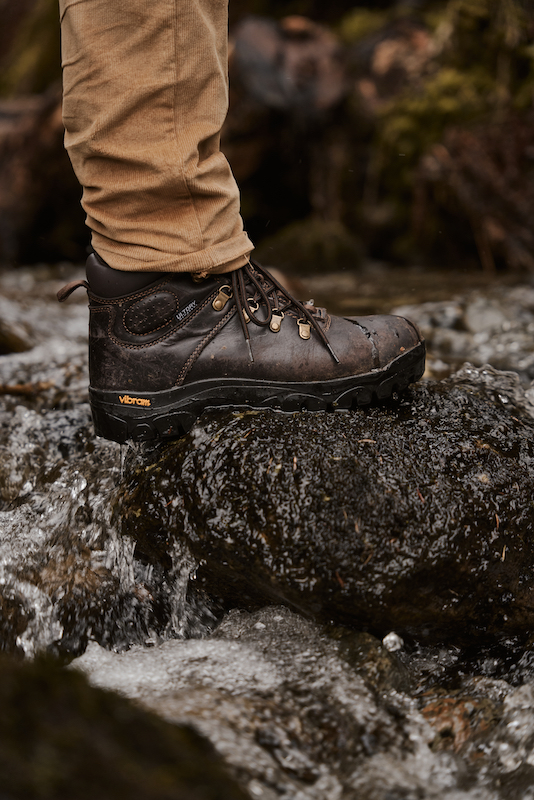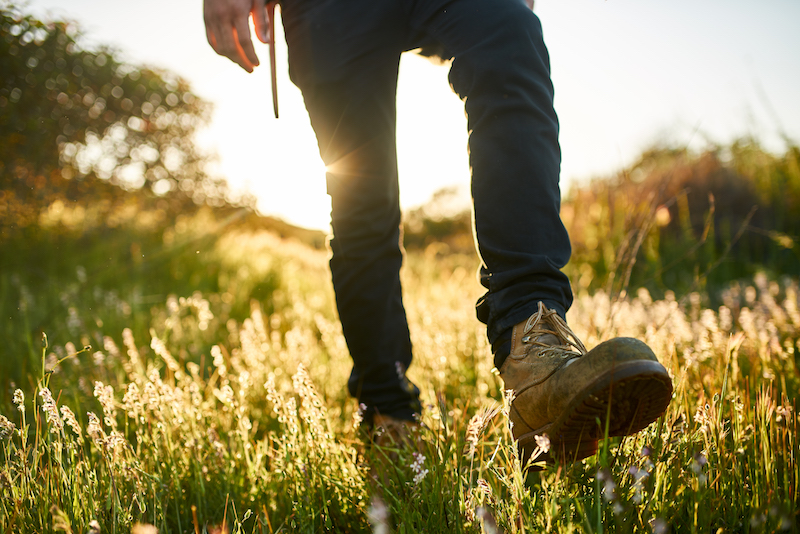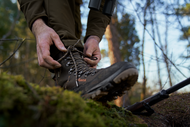Caring For Your Walking Boots
Caring for your walking and stalking boots is the key to prolonging their life and getting the most out of them. Often walking boots are worn for long periods of time, meaning you will need to rely on them for support, grip and comfort. It’s vital that you look after them correctly, to ensure they look after you. Fear not, we have a handy guide which covers cleaning, storing, and getting the most from your walking boots.
How To Clean Your Walking Boots
Cleaning your walking boots is a quick and easy task which needs to be done regularly to ensure your boots last. It’s unnecessary after a light walk where your boots aren’t dirty, but if they regularly get caked in mud, try to do them after every wear. Our easy guide takes you through cleaning your boots step by step, this shouldn’t take more than 20 minutes and will help restore them to their former glory!
Step 1: Let your muddy or wet boots fully dry naturally.
Step 2: Remove the insole of the shoe (if necessary) and laces so you can reach every nook and cranny!
Step 3: Brush all the dry mud with a boot brush in an area you don’t mind getting a bit muddy (outside is best to avoid any mess!).
Step 4: Create a warm water solution, with non-leather boots a mild detergent such as liquid soap crystals can also be used.
Step 5: Use a soft brush to give the boots a scrub and clean to remove any excess dirt that’s built up.
Step 6: If you use any soap, rinse off your boots so there is no soap residue left on them.
Step 7: Leave to dry naturally, avoid direct sunlight or sources of heat (like a radiator) as this can damage, crack or misshape them.
TOP TIP: To dry your boots quicker, or if they are very wet, stuff some newspaper in them to absorb some of the water.
Step 8: For leather boots, apply a suitable leather conditioner according to the manufacturer's instructions. It's important that if your boots are breathable (with for example a gore-tex lining) you use a leather conditioner that will still allow them to breathe. Traditional wax dubbing doesn’t breathe, so take care to choose a product recommended for use with breathable membranes.
Step 9: If your soles and laces need a wash too, put them in the warm water solution and give them a scrub. Let them fully dry naturally before returning to the boots.
Step 10: Put everything back together once dry and use them again and again.
How To Waterproof Your Boots
If your boots are leather or waterproof, they may need reproofing to keep them in their best condition, once they have been cleaned. The Dubarry Boot and Shoe Conditioner is perfect for this, it will prolong your boots’ life, whilst restoring its appearance and waterproof properties, ensuring your boots will last you!
Most waterproofing products can just be sprayed on the boot and then gently rubbed in with a clean cloth. Cream products such as the Ariat Leather Cream Polish can be applied using a cloth or sponge and gently rubbed in circular motions into the boots. This waterproofs them and prevents cracking.
The Dubarry Derrymore Boot Cleaning Kit is a perfect set for cleaning your boots, it contains a complete set of everything you may need!

Where To Keep Your Walking Boots
Keeping your boots in the correct places is key to ensuring they last as long as possible. Walking and stalking boots should be stored in a well-ventilated, dry room to ensure they don’t get damp, and away from direct sunlight and heat sources such as radiators, this is so that your boots don’t dry out and crack. Ideally, you should keep them in their box, to ensure they keep their shape and are stored as they were before they arrived with you.
When Is It Time To Replace Your Walking Boots?
Generally, a good pair of walking boots should last 500-1000 miles. The fabrics and waterproofing in a good pair of boots will likely last considerably longer than this, but the cushioning will start to diminish. If you aren’t sure if you need new boots, there are some steps you can perform to test your walking boots:
Step 1: Press your thumb on the middle of the sole of your boot (where the bridge of your foot would be) and see if there are compression lines in the material above, if there are, that’s a sign your sole is no longer supporting your feet.
Step 2: Look at your boots, this may seem obvious, but if your boots are torn or have ripped material, then it’s time to change them.
Step 3: Leakage. If your boots are leaking from the leather, or sole, they are beyond repair.
Step 4: Try on a new pair of boots in a shop, if they feel a lot more comfortable than your current walking boots, then it might be time to change them for a new pair. If your boots become unsupportive and uncomfortable, they are no longer beneficial to you.
If your walking boots are generally in good condition, but just need a new sole to help restore support, the Meindl Comfort Fit footbed insoles are a great and affordable way to extend the life of your boots.

Running Trainers VS Walking Boots?
Trainers are a great alternative to walking boots if you aren’t going on challenging, high-intensity or multi-height walks. Walking boots offer unparalleled support, grip and waterproofing properties, not forgetting extreme comfort.
If you are after durability, walking boots are the necessary footwear. They are built to last for approximately 500-1000 miles of walking, whereas cushioning in trainers should last for approx. 300-500 miles.
Over time, trainers wear, and the sole support decreases, so for a shoe that will support and be comfortable for a longer amount of time, you should use walking boots.


